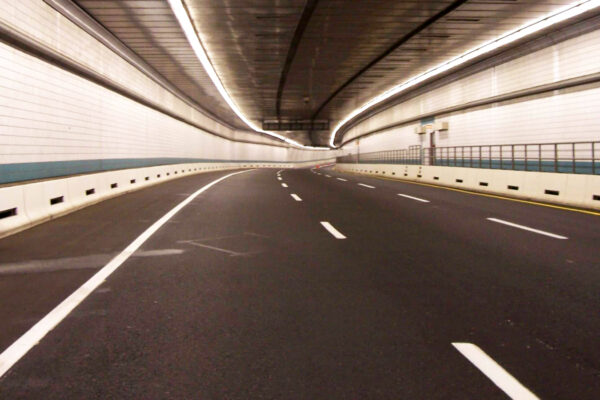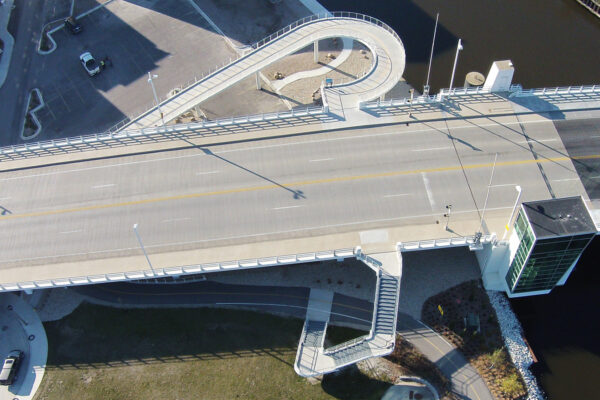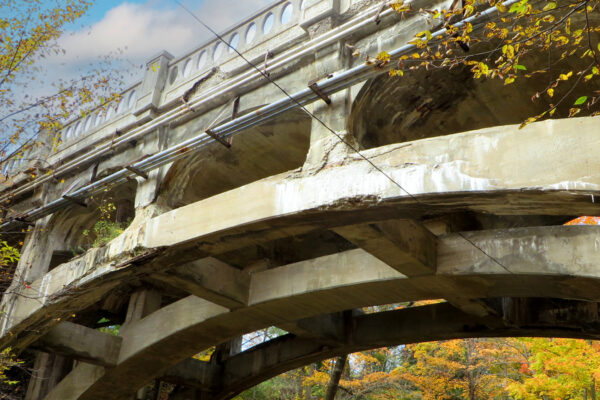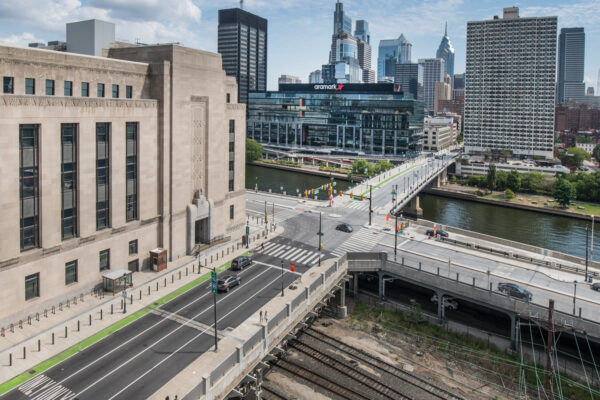I-75 over the Rouge River
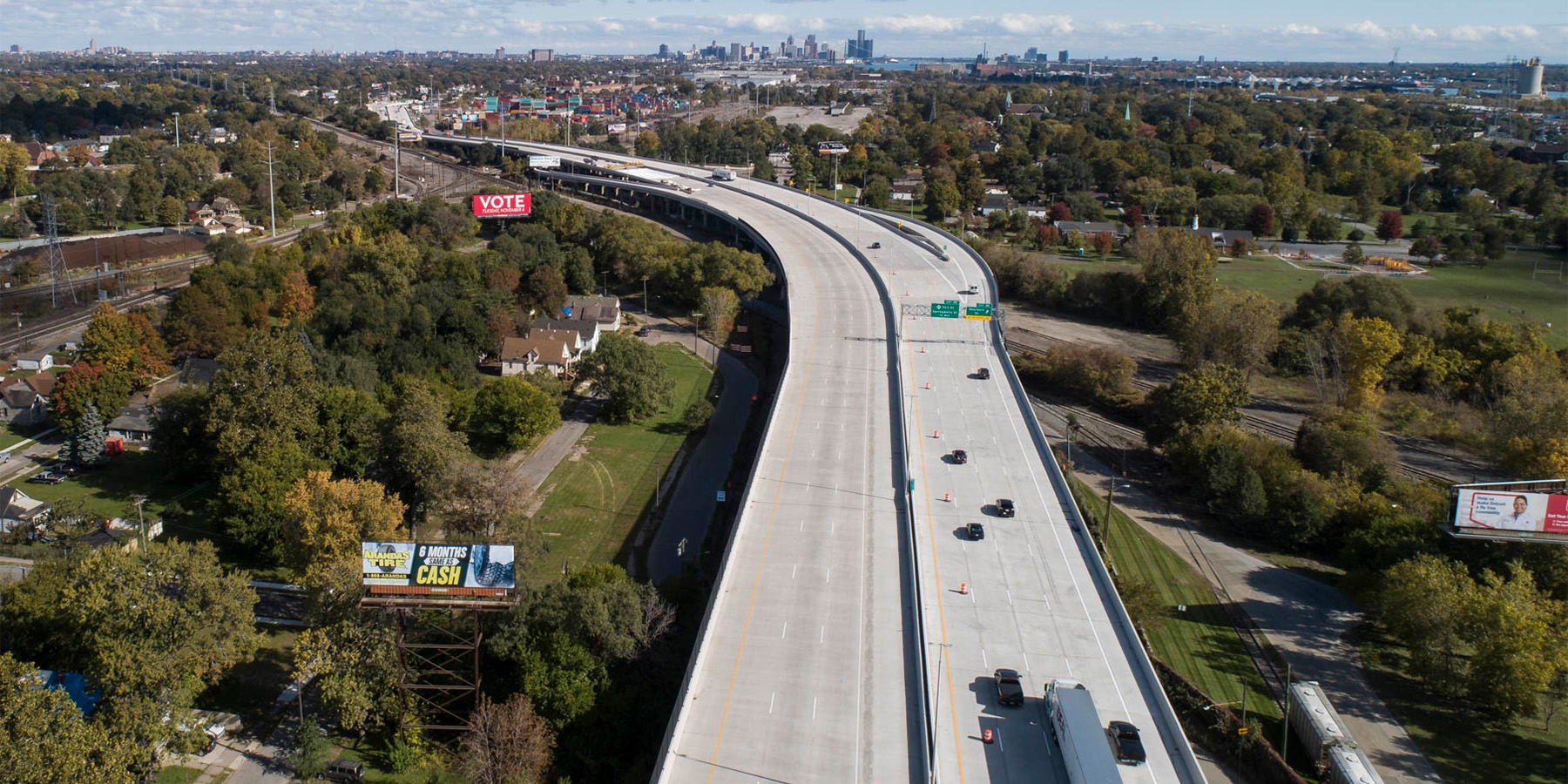
The I-75 over the Rouge River structure is an eight-lane, 8,600-foot-long bridge that connects Detroit to Canada and carries the highest traffic volume in Michigan. Rather than replacing the 50-year-old deteriorating structure, MDOT opted for a more cost-effective deck replacement, which saved $300 million and extended the life of the bridge by 50+ years. This massive project entailed the replacement of over 1,200,000 square feet of existing bridge deck. A key objective set by the Michigan Department of Transportation (MDOT) was to aggressively re-deck the bridge within two construction seasons with minimal disruption to travelers and surrounding residents.
As lead designer for this project, Benesch used innovative applications of new and existing technologies to overcome major challenges such as high traffic volume, the expedited project schedule, and extensive coordination with several utility companies, four railroads and the City of Detroit. To save construction time and money, an innovative and enhanced load rating technique was utilized to improve the accuracy of the bridge ratings and eliminate unnecessary strengthening work. It used three-dimensional, finite element modeling rather than more conservative AASHTO methods for live load distribution. Another innovation involved a deep deck haunch design that simplified deck construction at a lower cost and ensured timely project completion.
With 37 million vehicles crossing this structure every year, a complex traffic management plan was put in place to maximize constructability and minimize traveler delay, while ensuring the project stayed on track for completion. The plan involved maintaining three northbound lanes on one deck, one northbound lane for contractor access, and detouring all southbound lanes while constructing the other deck full-width. A robust public involvement strategy was also developed to create public awareness for detours and project progress. Several public meetings were conducted to inform the public, solicit input and refine the design as necessary. A project website, Twitter page and Facebook page were also created to communicate project progress.
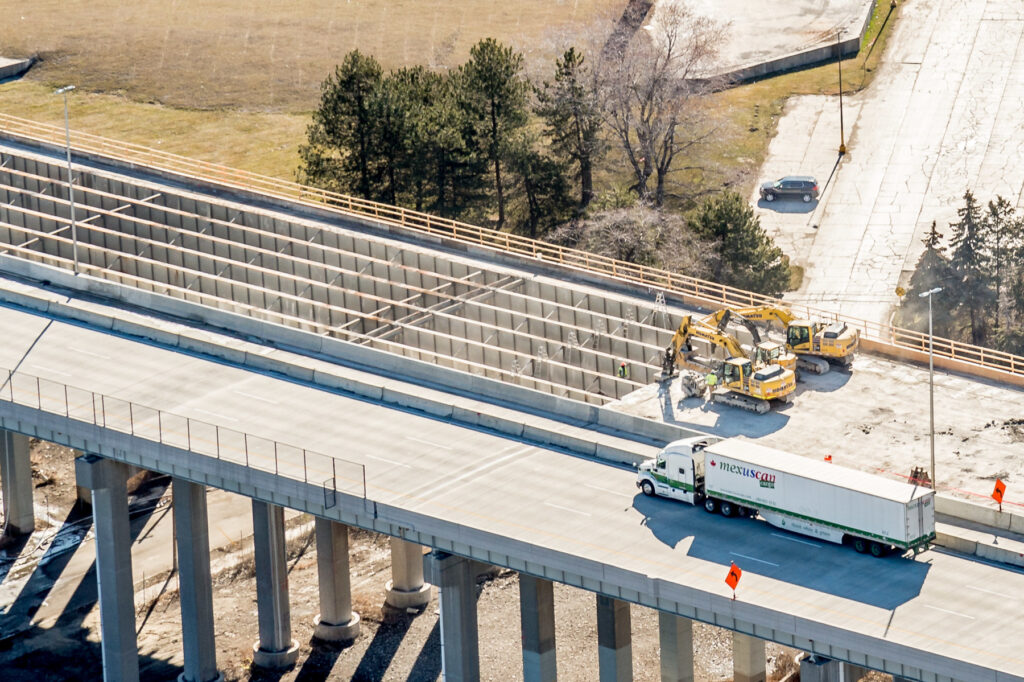
Not only was the project completed on time, but it enhanced the surrounding area, addressed growing traffic needs, boosted the local economy, and improved public access and safety within the corridor. With the superstructure redecking complete, the focus then turned to the bridge’s substructure. Benesch assisted in the inspection of all substructure elements, which included 193 piers and two abutments. Work entailed an in-depth evaluation of all substructure units, crash walls, slope protection and downspouts, and provided a cursory evaluation of the associated beam-ends and bearings and fencing. The results of these inspections prompted MDOT to move forward with rehabilitating the substructure as well.
Practice Areas
Services
Awards
- 2019, National Recognition Award, American Council of Engineering Companies
- 2019, Engineering Honorable Award, American Council of Engineering Companies - Michigan
- 2019, Partnered Project of the Year, International Partnering Institute

